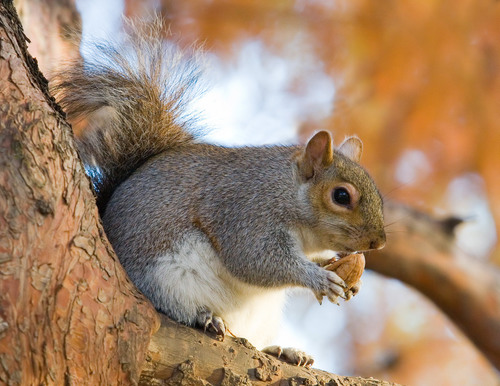
Eastern Gray Squirrel
The Eastern Gray Squirrel, with its agile leaps and bushy tail, scurries through forest canopies, aiding seed dispersal and boosting forest health. Ingenious in food hoarding and memory, this common yet fascinating creature is a vital ecological player.
6 years
Lifespan
255.0 - 539.0 g
Weight
Length: 23 - 30 cm; Height: 14 cm
Size
Grey, Grey-Brown
Color
1 year
Age of Sexual Maturity
10 weeks
Age of Weaning
20 mph
Top Speed
Least Concern
Conservation Status
Increasing
Population Trend
Distribution Range of the Eastern Gray Squirrel
Sciurus carolinensis, commonly known as the eastern gray squirrel, is native to the eastern and midwestern United States and parts of southeastern Canada. Its natural range includes states from southern Maine through the Canadian provinces of Quebec and Ontario, extending westward to Minnesota, Kansas, and eastern Texas, and going southward to Florida and eastern Texas.
Eastern Gray Squirrel's Habitat
Environmental Conditions
The eastern gray squirrel inhabits deciduous and mixed forests, particularly those dominated by oak, hickory, walnut, and beech trees, which provide abundant food sources such as nuts and seeds. These forests are typically found in temperate climatic zones featuring four distinct seasons with warm summers and cold winters.
Ecological Niche
As an arboreal omnivore, Sciurus carolinensis plays a crucial role in forest ecology by contributing to seed dispersion and forest regeneration. The species is adaptable to urban and suburban environments, often found in parks and gardens where it exploits bird feeders and human-provided resources. Their high adaptability has allowed them to thrive in a variety of forested areas as well as in heavily populated areas where natural predators are limited.
Copyright @ Nature Style Limited. All Rights Reserved.
 English
English